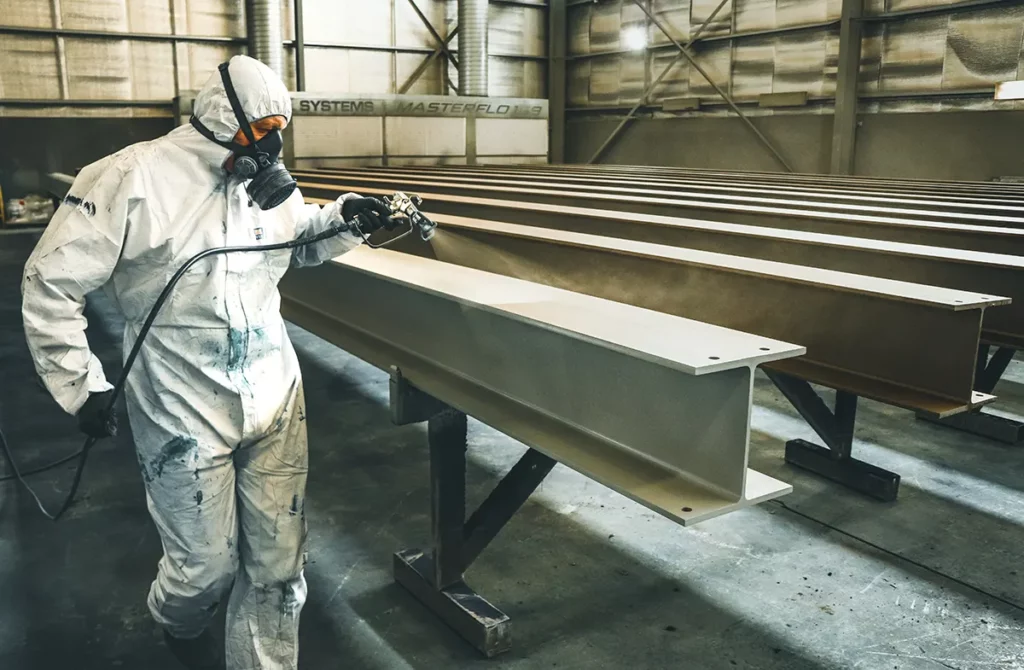Introduction
Electrostatic painting, also known as powder coating or electrostatic spray painting, is a revolutionary technique that has transformed the world of surface finishing. With its ability to create durable and visually appealing coatings, electrostatic painting has gained popularity across various industries, including automotive, aerospace, furniture, and architecture. This article aims to provide an in-depth exploration of electrostatic painting, covering its principles, advantages, application process, equipment, and industry-specific uses.
Understanding the Principles of Electrostatic Painting
Electrostatic painting operates on the principle of electrostatic attraction. The process involves applying an electrically charged powder coating to a grounded object. The charged powder particles are attracted to the object’s surface, resulting in a uniform and even coating. This attraction is primarily due to the triboelectric effect, where the powder particles acquire a positive charge when they come into contact with a negatively charged surface.
Advantages of Electrostatic Painting
- Enhanced Efficiency: Electrostatic painting offers high transfer efficiency, typically ranging from 60% to 90%. This efficiency ensures minimal waste, reduced overspray, and significant cost savings in terms of materials.
- Improved Coating Quality: The electrostatic attraction ensures an even distribution of the powder particles, resulting in a smooth, flawless finish. The consistent coating thickness reduces the likelihood of runs, sags, or drips, leading to an aesthetically pleasing end product.
- Durability and Resistance: Electrostatically applied coatings exhibit exceptional durability, including resistance to chipping, scratching, and fading. This makes them ideal for high-traffic areas or objects exposed to harsh environmental conditions.
- Environmentally Friendly: Electrostatic painting is an environmentally friendly alternative to traditional wet painting methods. The process eliminates the need for solvents, and the overspray can be collected and recycled, reducing air pollution and waste generation.
The Electrostatic Painting Process
- Surface Preparation: Proper surface preparation is crucial for achieving optimal results. The object to be painted must be cleaned, degreased, and free of rust or other contaminants. Abrasive techniques such as sandblasting or chemical treatments may be employed to ensure a clean surface.
- Powder Coating Application: The powder coating is typically made of finely ground pigments, resins, and additives. The coating is electrostatically charged using a spray gun or corona charging system. As the charged particles are propelled towards the grounded object, they adhere to its surface, forming a dry powder film.
- Curing: After the powder coating is applied, the object is transferred to a curing oven. The oven’s controlled temperature causes the powder particles to melt and fuse together, forming a smooth and durable finish. The curing process can vary depending on the type of powder used, typically ranging from 10 to 30 minutes.
Electrostatic Painting Equipment
- Spray Gun: Electrostatic spray guns are designed to impart a positive charge to the powder particles as they exit the gun. This ensures efficient transfer and adherence to the object’s surface.
- Control Unit: A control unit regulates the voltage applied to the spray gun, allowing for precise control of the electrostatic charge. This unit also includes safety features to prevent electrical hazards and monitor the performance of the system.
- Curing Oven: Curing ovens are specially designed to provide uniform heating and temperature control during the curing process. They may feature infrared or convection heating systems, depending on the specific requirements of the powder coating.
Industry-Specific Applications of Electrostatic Painting
- Automotive: Electrostatic painting has revolutionized the automotive industry by providing durable and visually appealing finishes for car bodies, wheels, and various interior componentssuch as dashboards or door panels. The high resistance to corrosion and UV radiation ensures that the paint remains vibrant and intact, even in harsh weather conditions.
- Aerospace: Electrostatic painting plays a critical role in aerospace applications, where lightweight materials and corrosion resistance are essential. Aircraft components, including fuselages, wings, and engine parts, benefit from the protective and decorative properties of electrostatically applied coatings.
- Furniture and Decorative Items: Electrostatic painting is widely used in the furniture industry to coat metal or wooden furniture pieces. It offers a wide range of color options, texture effects, and finishes, allowing manufacturers to create customized and visually appealing products. Decorative items such as light fixtures, sculptures, or metal artwork also benefit from the precise and high-quality coatings achieved through electrostatic painting.
- Architecture and Construction: Electrostatic painting finds application in architectural projects, providing durable and long-lasting coatings for metal structures, window frames, and railings. The ability to create uniform coatings with various textures and colors allows architects and designers to achieve their desired aesthetics while ensuring resistance to corrosion and weathering.
Conclusion
Electrostatic painting has transformed the way surfaces are finished across multiple industries. Its efficiency, durability, and environmental advantages make it a preferred method for achieving high-quality and visually appealing coatings. By harnessing the principles of electrostatic attraction, businesses can unlock the power of precision and efficiency, resulting in cost savings, improved product quality, and increased customer satisfaction. As technology continues to advance, electrostatic painting techniques are expected to evolve, offering even more innovative solutions for surface finishing challenges.

